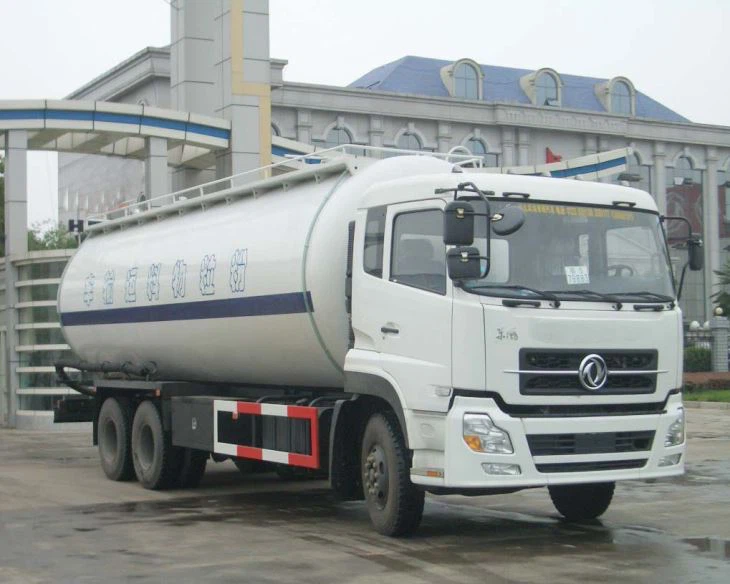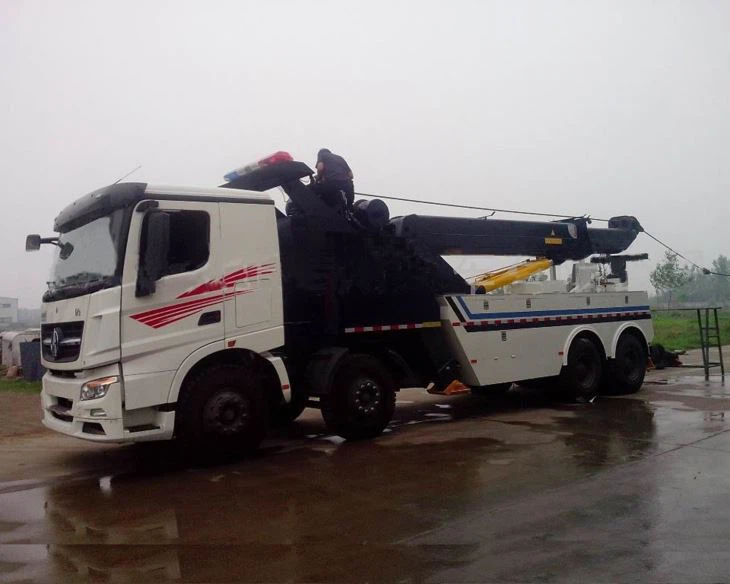Everything You Need to Know About Vacuum Tankers

Introduction
Vacuum tankers are versatile vehicles essential for numerous industries, particularly in waste management, construction, and agriculture. These specialized trucks use suction to collect liquid waste, sludge, and other materials, making them a practical solution for various applications. In this article, we will delve into the functionality, types, benefits, and usage of vacuum tankers, along with practical tips and examples. By the end, you will have a comprehensive understanding of vacuum tankers and how they play a critical role in environmental management and clean-up processes.
What is a Vacuum Tanker?
A vacuum tanker is a heavy-duty vehicle equipped with a vacuum pump and a storage tank. The primary function of these tankers is to create a vacuum that allows them to suck up materials, mainly liquid waste. Once collected, the material is stored in the tank for subsequent disposal or treatment. Vacuum tankers are commonly used for septic tank cleaning, industrial waste removal, and emergency spill response.
How Do Vacuum Tankers Work?
The operations of a vacuum tanker revolve around two main components: the vacuum pump and the storage tank.
Vacuum Pump
The vacuum pump is the core technology in a vacuum tanker. It creates a low-pressure environment within the tank, allowing atmospheric pressure to push materials into the tank through a hose. There are several types of vacuum pumps used in these trucks, including rotary vane, liquid ring, and positive displacement pumps.
Storage Tank
The storage tank holds the collected materials until they can be properly disposed of or treated. The tank is typically made from durable materials to withstand corrosive substances. Additionally, it is designed to be airtight to prevent leaks and contamination.

Types of Vacuum Tankers
Vacuum tankers come in various types tailored to specific applications. Understanding these types can help businesses choose the right vacuum tanker for their needs.
1. Septic Vacuum Tankers
Septic vacuum tankers are designed mainly for the removal of waste from septic tanks and portable toilets. They typically have a high capacity and are equipped with specialized hoses and nozzles.
2. Industrial Vacuum Tankers
These tankers are built for heavy-duty industrial applications. They can handle hazardous materials, chemicals, and sludges from manufacturing processes or wastewater treatment plants.
3. Water Vacuum Tankers
Water vacuum tankers are used for collecting and transporting water, particularly in construction sites or during emergency response situations such as floods.
4. Liquid Waste Vacuum Tankers
These tankers are used to remove liquid waste from various sources, including restaurants, grease traps, and food processing plants.
Benefits of Using Vacuum Tankers
Utilizing vacuum tankers can provide numerous advantages for businesses and the environment.
1. Efficient Waste Collection
Vacuum tankers offer a quick and efficient method for collecting a large volume of liquids and sludges, reducing downtime and operational disruptions.
2. Environmental Protection
By properly collecting and disposing of waste, vacuum tankers help prevent environmental contamination and protect natural resources.
3. Versatility
Vacuum tankers are adaptable and can serve a variety of industries, making them a valuable asset for businesses involved in waste removal and management.
4. Cost-Effectiveness
Investing in a vacuum tanker can be cost-effective in the long run, as it reduces the need for multiple vehicles and specialized equipment.
5. Safety Features
Modern vacuum tankers are equipped with safety features, including containment systems to prevent spills and protective gear for operators during material collection.
Practical Applications of Vacuum Tankers
Vacuum tankers can be employed in various sectors. Below are some practical examples of their applications.
1. Domestic Waste Management
Vacuum tankers are commonly used to empty septic tanks in residential areas. Regular maintenance can help prevent backups and maintain sanitary conditions.
2. Construction Sites
In construction, vacuum tankers can be utilized for the efficient removal of excess water, soil, and sludge, ensuring work sites remain clean and safe.
3. Emergency Spill Response
Vacuum tankers are essential for cleaning up hazardous spills quickly and effectively, preventing contamination of surrounding areas.
4. Industrial Cleaning
In industrial settings, vacuum tankers can handle the removal of sludge from tanks, pits, and containment areas, promoting workplace safety and compliance with environmental regulations.
Choosing the Right Vacuum Tanker
When selecting a vacuum tanker, several factors should be considered to ensure you choose the best option for your needs.
1. Capacity Requirements
Determine the volume of material you need to collect regularly. Vacuum tankers come in various sizes, so it’s important to select one that meets your capacity needs without being excessively large.
2. Material Compatibility
Consider the type of waste or materials you will be collecting. Different tankers are built for specific materials, including corrosive substances, so ensure the design matches your requirements.
3. Mobility Features
If you work in tight spaces or rough terrain, look for tankers with good maneuverability and design features that enable easy access to hard-to-reach areas.

4. Safety Features
Ensure the vacuum tanker has adequate safety measures, such as spill containment systems, emergency shut-off valves, and operator protection features.
Maintenance Tips for Vacuum Tankers
Proper maintenance of vacuum tankers is crucial for their longevity and operational efficiency.
1. Regular Inspections
Conduct routine inspections to check for leaks, cracks, or signs of wear and tear. Promptly addressing any issues can help prevent costly repairs later.
2. Clean the Tank
After each use, ensure the storage tank is cleaned to prevent the buildup of corrosive materials which may damage the tank over time.
3. Maintain the Pump
Follow manufacturer guidelines for maintaining the vacuum pump, including regular oil changes and checking for wear on seals and gaskets.
4. Safety Equipment Check
Regularly check safety equipment and features, ensuring they are functional and compliant with safety standards before operation.
Environmental Impact of Vacuum Tankers
Vacuum tankers play a crucial role in minimizing environmental impact by providing efficient waste management solutions.
1. Waste Reduction
Regular cleaning of septic tanks and industrial reservoirs helps reduce odors and harmful emissions, contributing to cleaner air.
2. Water Resource Protection
By efficiently collecting and treating liquid waste, vacuum tankers prevent contaminants from leaking into groundwater sources.
3. Support for Recycling
Many vacuum tankers can aid in the collection of recyclable materials, contributing to a more circular economy.
Cost Considerations for Vacuum Tankers
When investing in a vacuum tanker, various cost factors should be considered.
1. Purchase Price
The initial cost of purchasing a vacuum tanker can vary significantly based on its size and features. Budget accordingly based on your operational needs.
2. Operating Costs
Take into account the fuel consumption, maintenance, and repair costs, which can accumulate over time.
3. Regulatory Compliance Costs
Ensure that the vacuum tanker meets local regulations, as there may be hidden costs associated with upgrades or compliance measures.
4. Training Costs
Invest in training for operators to ensure safe and efficient operation of vacuum tankers, which can mitigate accidents and damage.
FAQ
1. What types of waste can vacuum tankers collect?
Vacuum tankers can collect various types of waste, including liquid waste, sludge, chemicals, and water. Their design is often specialized for different materials.
2. How often should septic tanks be emptied using vacuum tankers?
Septic tanks should generally be emptied every 3 to 5 years, although the frequency can vary based on usage and tank size.

3. Are vacuum tankers environmentally friendly?
Yes, vacuum tankers can be environmentally friendly when used correctly. They help in proper waste management and prevent contamination of natural resources.
4. What safety measures should be taken when using a vacuum tanker?
Operators should wear appropriate personal protective equipment, conduct routine safety checks, and ensure the tanker is compliant with safety standards.
5. Can vacuum tankers handle hazardous materials?
Yes, many vacuum tankers are specifically designed to handle hazardous materials, but it is essential to ensure that the tanker is appropriate for such materials.
6. How do I know what size vacuum tanker I need?
Consider your capacity requirements based on the volume of material you need to collect and the type of application. Consulting with a supplier can provide further guidance on size selection.
